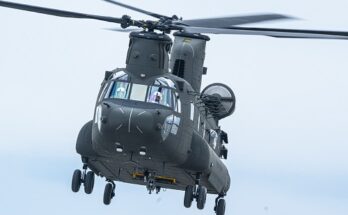
The nuclear submarine program of China’s People’s Liberation Army Navy (PLAN) is fraught with contradictory information, speculation, and propaganda. The lack of valid and verified information is a vivid reminder that the construction of Chinese nuclear submarines is shrouded in mystery. Often, guesswork and theories or hypotheses are quoted as fact, without the tenuous basis behind them being made clear. The big problem is that little distinction is made between observed evidence and suppositions. This carries over into official reports, where concepts or developments are stated without indication as to whether the reports in question are just repetitions of unofficial media, speculation, or simply quotations from sources that are not yet available to the public. Thus, the usual tests that can be applied to unconfirmed information are less effective when applied to People’s Republic of China naval programs.
The expansion of Bohai Shipyard in Huludao provides a good example of the problems inherent in interpreting Chinese information. It is almost universally described as a nuclear submarine construction facility, but the reality is that the new hulls are oriented toward merchant ship construction and the first ships to leave the shipyard were an offshore oil platform and a nuclear offshore power barge. The only association between the shipyard and submarines appears to be an unofficial Chinese blog that added the words “and nuclear submarines” to a company-supplied photograph of the new facility.
The appearance of four in-service SSBNs in the Southern Fleet came as a surprise, since conventional wisdom had suggested the nuclear-powered boats would be concentrated in the Northern Fleet. In retrospect, this expectation reflected a narrow vision of Chinese strategic interests and did not allow for the fact that those interests include many potential targets other than the United States. Two separate flotillas of SSBNs, one oriented east and the other southwest, would be logical, suggesting that a fleet of 10 modern SSBNs may well be envisioned. Forecast International’s forecast of SSBN construction is based on this assessment.
All this confusion aside, one thing that cannot be ignored is that the People’s Republic of China reportedly has an estimated 16 nuclear-powered submarines in service, with more under construction. These submarines may not match the latest technical standards set by the U.S., Britain, France, and Russia, but they do offer an impressive level of capability – one that is slowly being increased as each successive design modification is applied.
Forecast International’s Warships Forecast covers the key submarine, aircraft carrier, surface combatant, amphibious warfare, and underway replenishment programs that will dominate the warship industry over the next decade and beyond. It details the market impact of numerous key programs, including the Franco-Italian FREMM class frigate, the Queen Elizabeth class aircraft carrier, and the SSN-774 Virginia class submarine. Each report contains a full design history of the ship, an extensive list of major contractors and subcomponent suppliers, and a wealth of information on the ship’s performance and operational capabilities. Click here to learn more.
For more than 30 years, Richard has performed numerous roles as a top analyst for Forecast International. Currently, Richard is the Group Leader and Lead Analyst for Forecast International's Traditional Defense Systems, which covers all aspects of naval warfare, military vehicles, ordnance and munitions, missiles, and unmanned vehicles.
Having previously been Forecast International's Electronics Group Leader for 20-plus years, Richard established Electro-Optical Systems Forecast, as well as having been the prime editor of Electronic Systems Forecast, Land & Sea-Based Electronics Forecast, and C4I Forecast. Additionally, Richard has served as the Naval Systems Group Leader responsible for Anti-Submarine Warfare Forecast andWarships Forecast.



